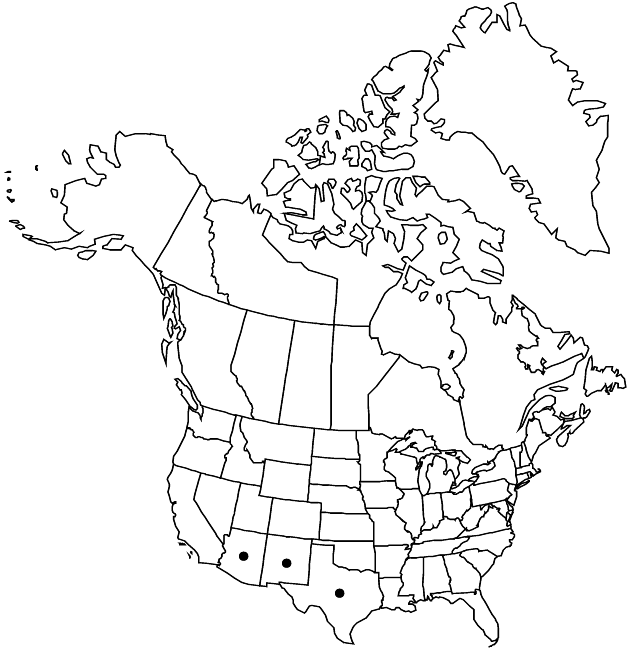Difference between revisions of "Heterotheca viscida"
Rhodora 70: 302. 1968.
FNA>Volume Importer |
FNA>Volume Importer |
(No difference)
| |
Revision as of 18:43, 24 September 2019
Perennials, 13–42 cm; taprooted. Stems 1–15+, ascending-erect (sometimes brown), appressed-strigose, mostly proximally long-hirsute, moderately to densely stipitate-glandular. Leaves: proximal cauline petiolate, blades ovate to oblanceolate, 23–51 × 5–15 mm, bases cuneate, margins entire, hispido-strigoso-ciliate (a few much longer spreading cilia near bases), apices acute to obtuse, mucronate, faces sparsely hispido-strigose, moderately to densely stipitate-glandular; distal sessile, blades lanceolate to ovate, 10–30 × 5–12.5 mm (sometimes slightly clasping, less so distally), margins flat or only remotely undulate, apices obtuse to acute. Heads 1–7, borne singly or in open, corymbiform arrays. Peduncles 10–36 mm, sparsely to moderately hispid, moderately to densely stipitate-glandular; bracts 0–2, linear-oblanceolate, usually greatly reduced. Involucres campanulate to hemispheric, 7.5–11 mm. Phyllaries in 4–5 series, lanceolate, unequal (outer lengths 1/5–1/4 inner), margins sometimes anthocyanic apically, faces sparsely strigose, stipitate-glandular. Ray florets 9–20; laminae 10–13 × 0.7–2.5 mm. Disc florets 16–76(–98); corollas ± ampliate, 5–7.5 mm, lobes 0.5–0.75 mm, sparsely hairy (0–0.25 mm). Cypselae monomorphic, obconic, compressed, 1.6–2.5 mm, ribs 4–7, faces moderately strigose; pappi off-white, outer of linear scales 0.2–1 mm, inner of 25–40 bristles 5–7 mm, longest weakly clavate. 2n = 18.
Phenology: Flowering May–Jul(–Oct).
Habitat: Clefts and crevices in cliffs and dry ledges, rocky slopes, in oak-manzanita chaparral, ponderosa pine and gambel oak woods, on igneous rocks and soils, rhyolite tuff
Elevation: 1500–3000 m
Distribution

Ariz., N.Mex., Tex.
Discussion
Heterotheca viscida grows in the mountains of southeastern Arizona, southwestern New Mexico, and trans-Pecos Texas. Plants from Texas generally have oblanceolate leaves and smaller heads and can be similar to forms of H. fulcrata var. arizonica and var. senilis. The species typically blooms earlier in the season than H. fulcrata.
Selected References
None.